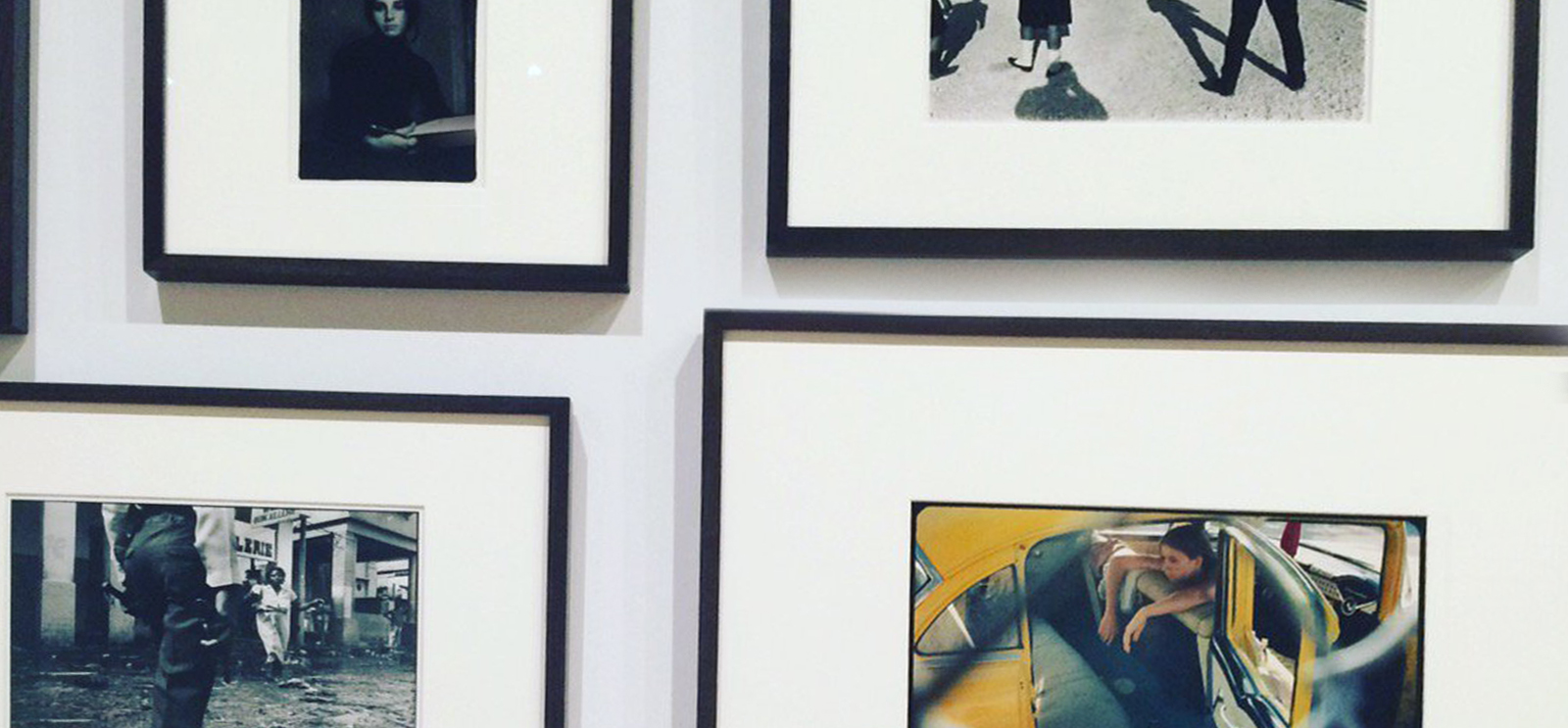
A view of framed photographs in Danny Lyon’s exhibit at the Whitney Museum of American Art in New York. (Photography courtesy Anna Kramer)
The iconic photographs of Danny Lyon, AB’63, document more than 50 years of social change and life outside the mainstream.
In the summer of 1962, Danny Lyon, age 20, packed a Nikon Reflex and a Leica camera into an army bag and hitchhiked south on Route 66, because that was “the road Jack Kerouac used,” he wrote in Memories of the Southern Civil Rights Movement (University of North Carolina Press, 1992). The photos Lyon took, now so familiar—separate drinking fountains, sit-ins at whites-only lunch counters, protesters being beaten by police—shocked the North and became an enduring record of the civil rights struggle.
After graduation, Lyon, AB’63, returned to the South to work as staff photographer for the Student Nonviolent Coordinating Committee. SNCC (pronounced “snick”) used his images to create powerful propaganda. A 1962 photo of a fierce-looking Mississippi highway patrolman was transformed into a poster with an added caption: “Is he protecting you?”
The photograph and poster are juxtaposed in a late-career retrospective, Danny Lyon: Message to the Future, which opened at the Whitney Museum of American Art in New York in June and runs through September 25. The exhibition will travel to San Francisco’s de Young Museum in November and later to Berlin and Zurich. As the New Yorker’s reviewer pointed out, Danny Lyon “has led an improbably adventurous life.” He grew up in a Jewish family in New York City. His father, a doctor, had fled Germany in the 1930s; his mother had fled pogroms in Russia.
A history major at UChicago, Lyon took photos for the yearbook and the University of Chicago Magazine, learning to make prints in the Maroon’s darkroom under the stairs in Ida Noyes Hall. At the time, UChicago was “a center for radicals and a hothouse of ideas,” Lyon wrote in Memories of Myself (Phaidon, 2009). As well as photography, his primary occupation as an undergrad was riding his Triumph motorcycle through the streets of the South Side.
By 1966, SNCC was transforming into an all-black organization, and Lyon was back in Hyde Park. Curious about biker gangs, Lyon asked a mechanic friend if he knew any. It turned out he was a member of the Chicago Outlaws; Lyon joined the gang too. The result was one of his most famous bodies of work, The Bikeriders (Macmillan, 1968), “the original template for what is now a cliché,” according to the British Journal of Photography.
Lyon calls himself a “photo-journalist, writer, and filmmaker,” but his process is closer to the participant-observer approach of a sociologist. He doesn’t just befriend his subjects; he becomes enmeshed in their lives for years. His approach worried even gonzo journalist Hunter S. Thompson: “I think you should get the hell out of that club,” he wrote to Lyon about the Outlaws, “unless it’s absolutely necessary for photo action.”
In the late 1960s, Lyon talked his way into the Texas prison system by “bullshitting as fast as I could,” he told Artforum International. “I think I implied I was with Life magazine”—a publication he despised. With permission from the director of prisons, he documented prison life for more than a year; the only stipulation was that he couldn’t photograph death row or the electric chair. (He photographed “Old Sparky” anyway.) He took pictures of men picking cotton, collapsing of heat exhaustion, being strip-searched. The photos were published in 1971 as Conversations with the Dead (Holt, Rinehart, and Winston).
“I want to show that in an unknown room (in a completely blighted area) there is a hidden paradise where the walls hang with the richness of life,” Lyon wrote in his artist’s statement for his first solo show, at the Art Institute of Chicago in 1966. Since then, Lyon’s politics and aesthetics have remained remarkably consistent. He has photographed undocumented workers in the United States, prostitutes and street children in Colombia, coal miners in China, the Occupy movement.
The Whitney show features not only photographs but photo collages and documentary films. It includes photos from his book The Destruction of Lower Manhattan (Macmillan, 1969), an anomalous body of work featuring few people. Lyon documented the city’s oldest buildings just before they were demolished to make space for the World Trade Center and other urban renewal developments. The New Yorker review calls these images “the heart of the show”—a strikingly New York perspective. But in Lyon’s expansive, compassionate body of work, a viewer from anywhere could find something that resonates.
